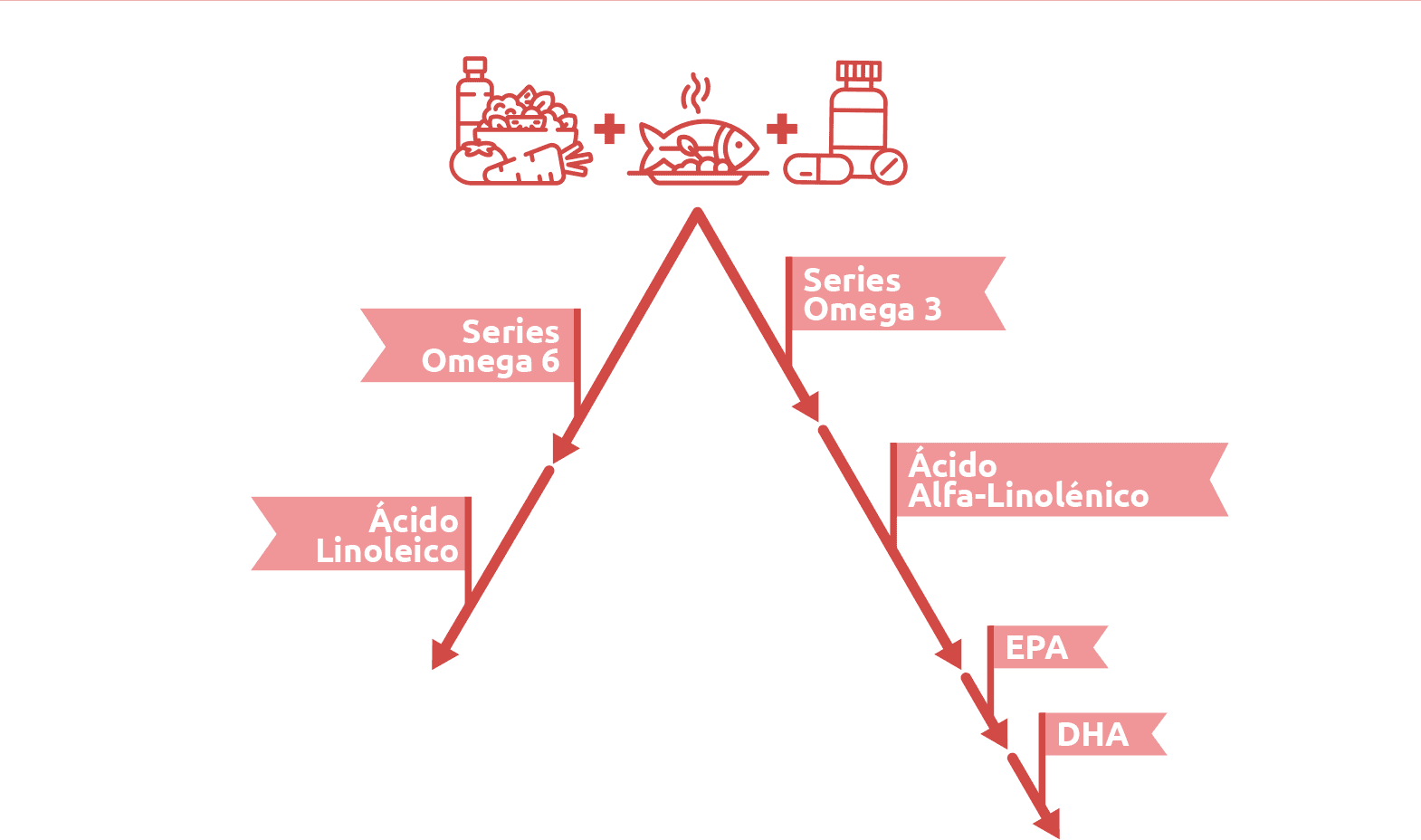
The health importance of Omega 3, 6, 7 and 9
What are fatty acids?
Fatty acids are involved in our metabolism and there are more than seventy different types of fatty acids. They are bioactive molecules that have a dual function for the body: they provide energy and act as regulators of vital metabolic processes.
There are three types of fatty acids: saturated, monounsaturated and polyunsaturated.
Omega 3 and 6
Among the polyunsaturated fatty acids (PUFAs Poly-Unsaturated Fatty Acids) we find two essential fatty acids that are indispensable for the metabolic processes of the body and that the organism cannot synthesize and must be supplied in the diet: linolenic acid (omega 3 series) and linoleic acid (omega 6 series).
Polyunsaturated fatty acids are particularly important in the regulation of the functions of the brain, heart, membrane, retina, liver, kidneys, skin, mucous membranes, adrenal glands and gonads, i.e. they are indispensable for the maintenance of health. They are necessary in the diet so that the fat-soluble vitamins in food (A, D, E and K) can be absorbed. They are also required for the metabolism of cholesterol.
Fatty acids in the diet
From a nutritional point of view, we can classify them into two large groups:
- Non-essential fatty acids, which can be synthesized by the body.
- Essential fatty acids, which must necessarily be supplied by the diet. Their balance, both quantitative and qualitative, must be taken into account as it is decisive for health. Here we find the so-called Omega.
How do you obtain fatty acids for your body?
The EFSA (European Food Safety Authority) and American Heart Association dietary guidelines recommend consuming between 250-500 mg of EPA + DHA per day. However, the human body is unable to synthesise these essential polyunsaturated fatty acids and, as a result, we are mainly dependent on our diet and supplements to obtain them.
The main vegetable dietary sources of essential fatty acids are: for Linoleic Acid (LA), cereals (such as sesame), most vegetable oils such as sunflower, saffola and corn; and for Alpha-Linolenic Acid (ALN), canola oil, flaxseed and rapeseed oils, nuts (such as macadamia nuts) and green leafy vegetables such as purslane.
Fatty fish, rich in Omega 3 polyunsaturated fatty acids, as well as an excellent source of protein and minerals, is presented as a reference food in heart-healthy diets.

The figure shows the metabolic process of essential fatty acids from linoleic acid (omega 6) and alpha linolenic acid (omega 3). Adapted from: Undurti N. Das. Biotechnol. J. 2006, 1, 420-439
Cardioprotective and neuroprotective action
There is extensive evidence from controlled clinical and epidemiological studies that long-chain polyunsaturated fatty acids (LCPUFA) contribute to optimal cardiac and neurological function.

The cardioprotective effect of these fatty acids is focused on maintaining and normalizing cholesterol and triglyceride levels, blood pressure, cardiac and vascular functioning and on inflammatory processes, hyperlipidemia and hypertension.
In their neuroprotective role, they perform structural functions and influence numerous developmental processes and neuronal behavior, including changes in learning, auditory memory, and visual and olfactory responses.
What are the different types of Omega?
Omegas are classified as essential fatty acids and are essential for the correct functioning of the organism.
The best known Omegas are the alpha-linolenic acid (omega 3 family) and the linoleic acid (omega 6 family). However, there are also other members belonging to the Omega family, such as omega 9 and omega 7, which complement each other very well, adding value for your health.
Omegas 3, 6, 7 and 9
Omega 3: EPA and DHA:
The most characteristic Omega-3 is the alpha-linolenic acid, being the precursor of other omega-3 fatty acids, DHA and EPA. DHA (Docosahexaenoic Acid) and EPA (Eicosapentaenoic Acid) have very important properties for health such as: the normal maintenance of triglycerides in the blood as well as heart function and blood pressure. Also, DHA contributes to the normal development of the brain, both in the fetus and in breastfeeding children.
Omega 6:
Linoleic acid. It is the precursor of other fatty acids synthesized by the body in the liver: gamma-linoleic acid (GLA) and dihomo-gamma-linoleic acid (DGLA). Linoleic acid helps maintain normal cholesterol levels and is necessary for normal growth and development in children.
Omega 7:
Palmitoleic acid. This is found in a wide variety of animal fats, vegetable oils and marine oils. It is also highly concentrated in macadamia nut oil (Macadamia integrifolia) and sea buckthorn oil (Hippophae rhamnoides). Palmitoleic acid is a common component of human adipose tissue, although it is found in higher concentrations in the liver.
Omega 9:
Oleic acid. It is a monounsaturated fatty acid typical of vegetable oils such as olive oil, sunflower oil, avocado, among others. Oleic acid contributes to the maintenance of normal levels of LDL-cholesterol in the blood.





